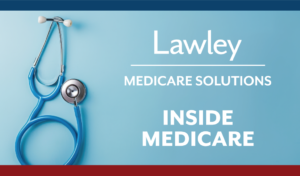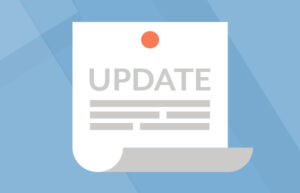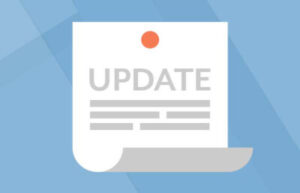Exchange Notice Technical Release
Exchange Notice Technical Release
May 13, 2013
To download this document, click here: Exchange_Notice_Technical_Release
Beginning Jan. 1, 2014, individuals and employees of small businesses will have access to insurance coverage through the Affordable Care Act’s (ACA) health insurance exchanges (Exchanges). Open enrollment under the Exchanges will begin on Oct. 1, 2013. ACA requires employers to provide all new hires and current employees with a written notice about ACA’s Exchanges.
On May 8, 2013, the Department of Labor (DOL) released Technical Release 2013-02 to provide temporary guidance on the Exchange notice requirement. This temporary guidance will remain in effect until the DOL issues regulations or other guidance. The DOL also announced the availability of Model Exchange Notices.
In addition, the DOL’s temporary guidance includes a new COBRA model election notice, which has been updated to include information regarding health coverage alternatives offered through the Exchanges.
EXCHANGE NOTICE
-Affected Employers
ACA’s Exchange notice requirement applies to employers that are subject to the FLSA. In general, the FLSA applies to employers that employ one or more employees who are engaged in, or produce goods for, interstate commerce. In most instances, a business must have at least $500,000 in annual dollar volume of sales or receipts to be covered by the FLSA.
The FLSA also specifically covers the following entities: hospitals; institutions primarily engaged in the care of the sick, the aged, mentally ill, or disabled who reside on the premises; schools for children who are mentally or physically disabled or gifted; preschools, elementary and secondary schools, and institutions of higher education; and federal, state and local government agencies.
-Required Content
In general, the Exchange notice must:
• Inform employees about the existence of the Exchange and describe the services provided by the Exchange and the manner in which the employee may contact the Marketplace to request assistance;
• Explain how employees may be eligible for a premium tax credit or a cost-sharing reduction if the employer’s plan does not meet certain requirements;
• Inform employees that if they purchase coverage through the Exchange, they may lose any employer contribution toward the cost of employer-provided coverage, and that all or a portion of this employer contribution may be excludable for federal income tax purposes; and
• Include contact information for the Exchange and an explanation of appeal rights.
-Model Notices
The DOL provided the following model Exchange notices:
• A model Exchange notice for employers who do not offer a health plan; and
• A model Exchange notice for employers who offer a health plan to some or all employees.
Employers may use one of these models, as applicable, or a modified version, provided the notice meets the content requirements described above.
-Providing the Notice
-Who Must Receive a Notice?
Employers must provide the Exchange notice to each employee, regardless of plan enrollment status or of part-time or full-time status. Employers are not required to provide a separate notice to dependents or other individuals who are or may become eligible for coverage under the plan but who are not employees.
-What Is the Deadline for Providing the Notice?
The DOL’s temporary guidance sets a compliance deadline for providing the Exchange notices that matches up with the start of the first open enrollment period under the Exchanges.
Employers must provide the Exchange notice to both new hires and current employees as follows:
- New Hires – Employers must provide the notice to each new employee at the time of hiring beginning Oct. 1, 2013. For 2014, the DOL will consider a notice to be provided at the time of hiring if the notice is provided within 14 days of an employee’s start date.
- Current Employees – With respect to employees who are current employees before Oct. 1, 2013, employers are required to provide the notice no later than Oct. 1, 2013.
Employers that decide to inform their employees about the Exchanges earlier than the Oct. 1, 2013, deadline are permitted to use the model notices and rely on the DOL’s temporary guidance.
-Method of Providing Notice
The notice is required to be provided automatically, free of charge.
The notice must be provided in writing in a manner calculated to be understood by the average employee. It may be provided by first-class mail. Alternatively, it may be provided electronically if the requirements of the DOL’s electronic disclosure safe harbor are met. This safe harbor allows plan administrators to send certain disclosures electronically to:
• Employees with work-related computer access; and
• Other plan participants and beneficiaries who consent to receive disclosures electronically.
The safe harbor does not require the use of any specific form of electronic media. However, plan administrators are required to use measures reasonably calculated to ensure actual receipt of the material by plan participants and beneficiaries. Merely placing a disclosure on a company website available to employees will not by itself satisfy this disclosure requirement.
COBRA ELECTION NOTICE
Under COBRA, a group health plan must provide qualified beneficiaries with an election notice, which describes their rights to continuation coverage and how to make an election. The election notice must be provided to the qualified beneficiaries within 14 days after the plan administrator receives the notice of a qualifying event.
The DOL updated the model COBRA election notice to help make qualified beneficiaries aware of other coverage options available in the Exchanges. Use of the model election notice, appropriately completed, will be considered by the DOL to be good faith compliance with the election notice content requirements of COBRA.
This Legislative Brief is not intended to be exhaustive nor should any discussion or opinions be construed as legal advice. Readers should contact legal counsel for legal advice.






